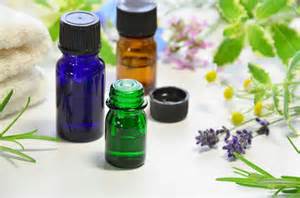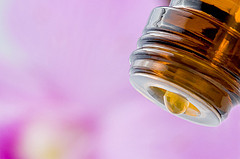 Aromatherapy is a complementary therapy that has been on the rise over the last several years and has gone mainstream. More specifically the increase use of essential oils is making its presence on the market. The Aromatherapy and essential oil market had a record breaking year in 2015 displaying large revenue for essential oil participants (Aromatherapy and Essential Oil Markets, 2016). According to various research articles, the top two multi-level marketing companies had revenue over $1 billion each in 2015 (Aromatherapy and Essential Oil Markets, 2016).These numbers are very promising for aromatherapy and essential oils.
Aromatherapy is a complementary therapy that has been on the rise over the last several years and has gone mainstream. More specifically the increase use of essential oils is making its presence on the market. The Aromatherapy and essential oil market had a record breaking year in 2015 displaying large revenue for essential oil participants (Aromatherapy and Essential Oil Markets, 2016). According to various research articles, the top two multi-level marketing companies had revenue over $1 billion each in 2015 (Aromatherapy and Essential Oil Markets, 2016).These numbers are very promising for aromatherapy and essential oils.
The reason for the big increase in the Aromatherapy market is, in part, due to the use of herbal medicine treatments. Globally, Aromatherapy is trending as a self-treatment to avoid doctor visits (Saha, 2016). This trend is leading to a huge increase in the market for essential oils, creating a large demand for more oil. Top oils globally include: Basil, Black Pepper, Clove, Eucalyptus, Jasmine, Lavender, Lemon, Sandalwood, and Tea Tree (Saha, 2016). The high demand for the oils is good news for multi-level marketing companies (Saha, 2016). These companies are the key players in the Aromatherapy market, and vary in quality. With Aromatherapy predicted to have a great impact on the global market by 2025, more companies are getting on board.
Quality in oils
The question that needs to be asked is, how will the big demand for Aromatherapy affect essential oils and essential oil availability? Right now it is too early to say, but there is already growing concern for the sustainability and the ethical harvesting of the plants used in the production of essential oils. An increase in demand suggests that there will be an increase in essential oils and essential oil companies. Big retailers in the United States such as Wal-Mart and Target are beginning to sell various brands of essential oils in the store, but also sell Aura Cacia in their online store. Wal-Mart has launched their essential oils with claims that 7 of the 9 are 100% pure essential oil (Jenkins, 2016). This is a bold statement since no information could be found to backup their claim that their oils are 100% pure. The essential oils also retailing at $5.97 for all the oils in the line.
With essential oils selling at $5.97 each, something isn’t quite adding up. Anyone who is familiar with essential oils knows that not every oil is going to sell for the same price. Right away this is a red flag because it begs the question what are they putting in bottle to sell at a low price?
Over at Essential Oil University, Dr. Robert Pappas has done some testing on the essential oils sold at Wal-Mart. According to his analysis, the oil labeled as Cinnamon oil in fact contains Cassia oil which cost a fraction of true Cinnamon bark and has a different chemistry. Additional testing also disclosed that the Lavender oil was not Lavender, but the lesser expensive Lavandin essential oil. From the odor alone Dr. Pappas could determine that the oil was not Lavender but rather Lavandin, a hybrid of Lavender oils. Lavandin has different Aromatherapeutic benefits when compared to lavender, so customers will be getting different results. Dr. Robert Pappas also goes on to evaluate Peppermint with predictable results, finding that the oil in the bottle was Cornmint. Not all the oils from Wal-Mart were not tested, but there was a pattern of deceit.
GuruNanda will be launching their essential oil blends into Wal-Mart this April with a $10.99 retail price across the board and scratch and sniff lids (Johnsen, 2016). The maker of GuruNada had this to say about their blends, “We’ve taken the guesswork out of Aromatherapy with these blends that combine carefully selected ingredients for maximum effect,” (Johnsen, 2016).
Any aromatherapist knows that their work isn’t “guess work” and actually involves a lot training and knowledge. If aromatherapy was about guessing then anyone could be an Aromatherapist. Once again it should be noted that no testing has been done yet to determine if the blends are pure. Production of an essential oil can vary from plant to plant which in turn affects the final cost. Quality of essential oils needs to be a high priority, even more so now, with the growing trend of Aromatherapy and essential oil use.
The future of essential oils
The growing field of Aromatherapy is great and wonderful for everyone. There are so many benefits from practicing Aromatherapy, but there should also be caution. With the growing popularity of Aromatherapy there is much concern for the quality and availability of essential oils. Creating a better awareness for essential oils, and how they are obtained, as well as their sustainability status is needed.
References
Aromatherapy and Essential Oils Market 2016. (2016, February). Retrieved April 12, 2016, from http://www.researchandmarkets.com/research/ctdhw4/aromatherapy_and
Jenkins, A. (2015, June 3). Essential Oils Review. Retrieved April 12, 2016, from http://whoawaitwalmart.com/post/120626397235/what-we-think-earthly-elements-hello-friends
Johnsen, M. (2016, February 26). GuruNanda brings latest aromatherapy offerings to mass outlets. Retrieved April 12, 2016, from http://www.drugstorenews.com/article/gurunanda-brings-latest-aromatherapy-offerings-mass-outlets
Saha, S. (2016, February 22). Aromatherapy Market To Make Great Impact In Near Future by 2025. Retrieved April 12, 2016, from http://empowerednews.net/aromatherapy-market-to-make-great-impact-in-near-future-by-2025/1882526/
Dr. Robert Pappas Essential Oil University Links
Facebook: https://www.facebook.com/EssentialOilUniversity/
Website: https://essentialoils.org/
by Bryant Hernandez, Graduate Healthcare Administration
 Photo courtesy of Honolulu Media https://www.flickr.com/photos/68909241@N07/
Photo courtesy of Honolulu Media https://www.flickr.com/photos/68909241@N07/ 

